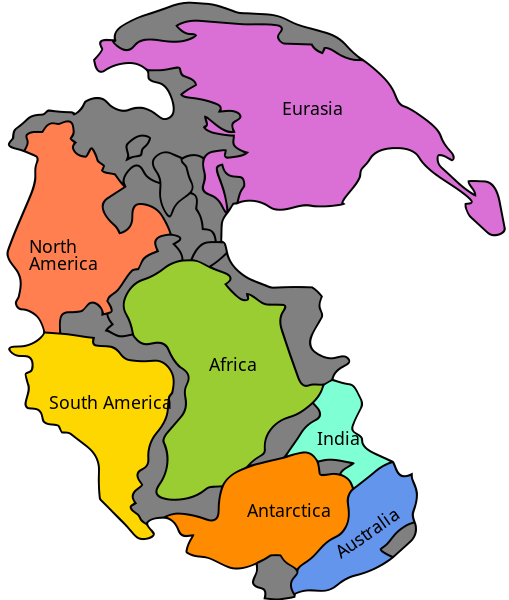In this model, a key role was played by horizontal gene transfer. From ScienceDaily:
Methane-producing microbes may be responsible for the largest mass extinction in Earth’s history. Fossil remains show that sometime around 252 million years ago, about 90 percent of all species on Earth were suddenly wiped out — by far the largest of this planet’s five known mass extinctions. It turns out that Methanosarcina had acquired a particularly fast means of making methane, and the team’s detailed mapping of the organism’s history now shows that this transfer happened at about the time of the end-Permian extinction.
…
Volcanoes are not entirely off the hook, according to this new scenario; they have simply been demoted to accessories to the crime. The reason for the sudden, explosive growth of the microbes, new evidence shows, may have been their novel ability to use a rich source of organic carbon, aided by a sudden influx of a nutrient required for their growth: the element nickel, emitted by massive volcanism at just that time.
The new solution to this mystery is published this week in the Proceedings of the National Academy of Sciences by MIT professor of geophysics Daniel Rothman, postdoc Gregory Fournier, and five other researchers at MIT and in China.
The researchers’ case builds upon three independent sets of evidence. First, geochemical evidence shows an exponential (or even faster) increase of carbon dioxide in the oceans at the time of the so-called end-Permian extinction. Second, genetic evidence shows a change in Methanosarcina at that time, allowing it to become a major producer of methane from an accumulation of carbon dioxide in the water. Finally, sediments show a sudden increase in the amount of nickel deposited at exactly this time. More.
Horizontal gene transfer was the method by which they are thought to have acquired the increased ability to produce methane.
Abstract: The end-Permian extinction is associated with a mysterious disruption to Earth’s carbon cycle. Here we identify causal mechanisms via three observations. First, we show that geochemical signals indicate superexponential growth of the marine inorganic carbon reservoir, coincident with the extinction and consistent with the expansion of a new microbial metabolic pathway. Second, we show that the efficient acetoclastic pathway in Methanosarcina emerged at a time statistically indistinguishable from the extinction. Finally, we show that nickel concentrations in South China sediments increased sharply at the extinction, probably as a consequence of massive Siberian volcanism, enabling a methanogenic expansion by removal of nickel limitation. Collectively, these results are consistent with the instigation of Earth’s greatest mass extinction by a specific microbial innovation.– Daniel H. Rothman, Gregory P. Fournier, Katherine L. French, Eric J. Alm, Edward A. Boyle, Changqun Cao, and Roger E. Summons. Methanogenic burst in the end-Permian carbon cycle. PNAS, March 2014 DOI: 10.1073/pnas.1318106111
Here are other proposed causes of the Permian extinction. The supercontinent of the day was Pangaea:
Follow UD News at Twitter!
